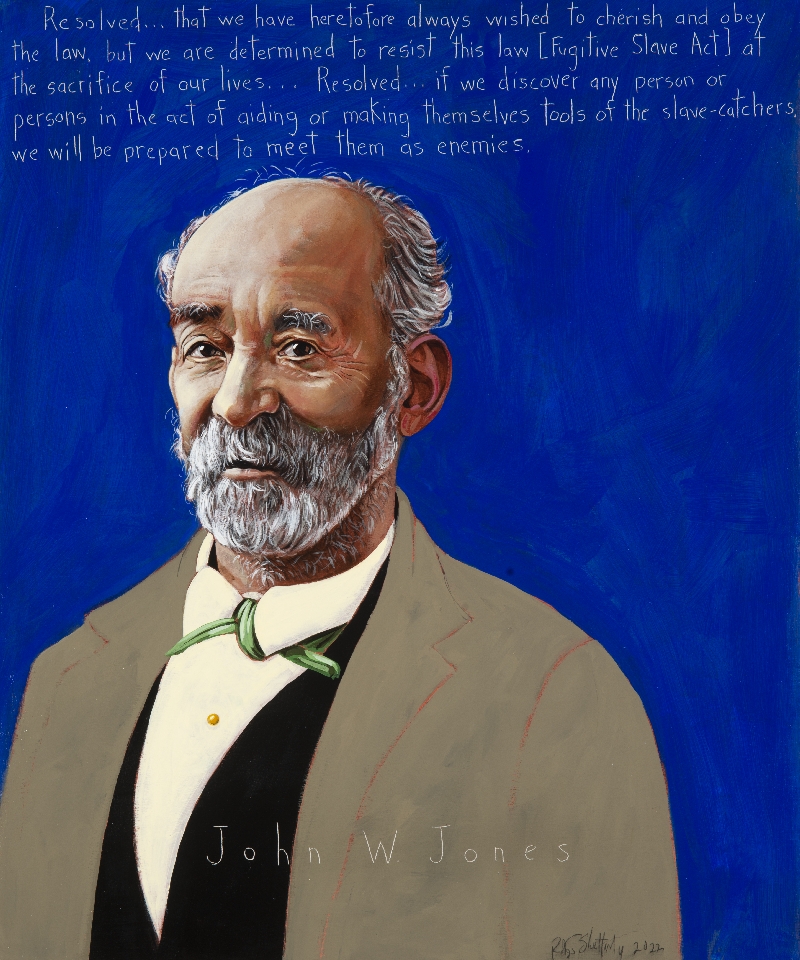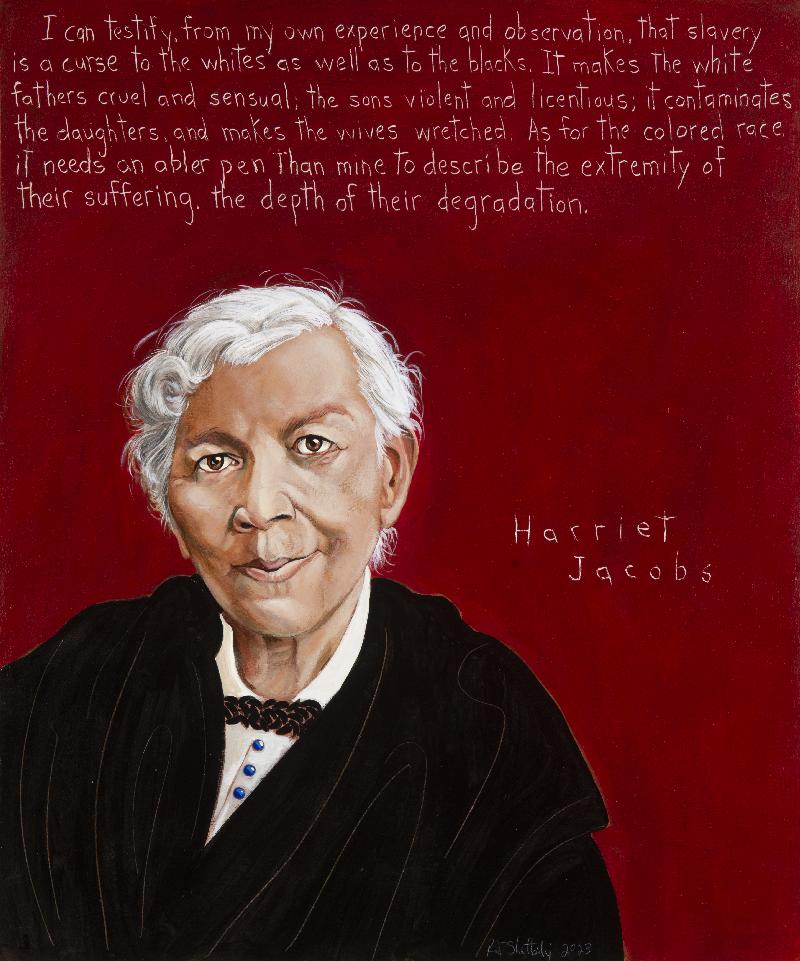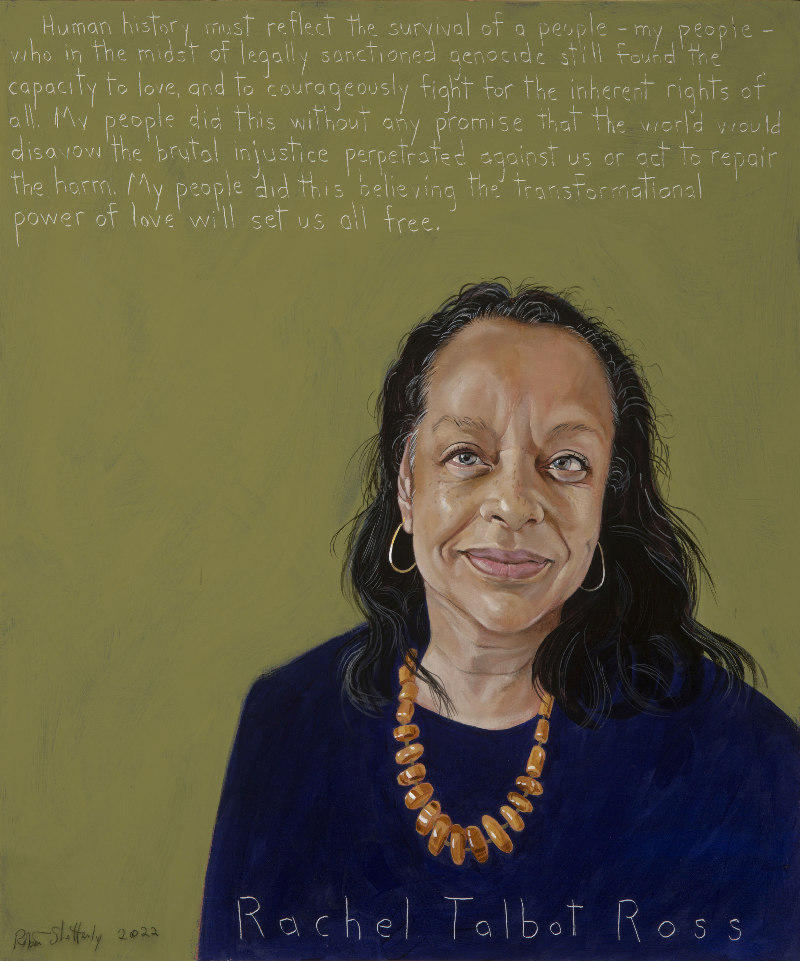What's New
Black History Month: AWTT Gallery Welcomes New Portraits
Artist Robert Shetterly wasn’t thinking about Black History Month when he began painting his most recent portrait subjects. Almost by coincidence, these three portraits were finished and added to the AWTT gallery this month. Perhaps this says something about the inevitable prominence of Black Americans’ contributions toward a more just society – every month in every year.
John W. Jones

Born into slavery in Virginia in 1817, John W. Jones fled north at the age of 27, settled in Elmira, New York and became a significant force in the Underground Railroad. At times, Jones aided up to 30 people a night in their escape. Not a single person of the over 800 assisted in his lifetime was captured.
Jones was also an outspoken abolitionist and critic of the Fugitive Slave Act in 1850. He served as sexton sexton of the First Baptist Church in Elmira for forty-three years and is remembered for arranging proper burials for nearly 3,000 Confederate soldiers.
Jones’s house in Elmira has been converted into the John W. Jones Museum, commemorating the important role the town played as a station on the Underground Railroad.
Harriet Jacobs

Harriet Ann Jacobs (1813-1897) was a writer, abolitionist, and spiritual leader who self-liberated from slavery and went on to write an account of her life, Incidents in the Life of a Slave Girl, which became instrumental to the abolitionist movement. Her deeply personal, compelling narrative encouraged women of the north to become activists in the anti-slavery cause. To this day, it remains a foundational firsthand account of the cruelty of slavery and a powerful spiritual text.
In addition to her writing, Jacobs worked in support of the abolition movement, first in Rochester, New York, where her brother John had joined the Western New York Anti-Slavery Society. In the 1860s, Jacobs and her daughter Louisa founded the Jacobs School in Alexandria, Virginia, where mother and daughter taught hundreds of freed people. They worked for relief organizations in Savannah, Washington, D.C. and Boston.
Shetterly’s portrait of Harriet Jacobs will be unveiled at the First Church in Cambridge, Massachusetts on February 26, 2023. An image of the portrait, along with her AWTT biographical sketch, will be available on this site after the unveiling.
Rachel Talbot Ross

Jumping ahead a century or two, Rachel Talbot Ross came to Shetterly’s attention as she was on the brink of being elected the first Black Speaker of the Maine House of Representatives, in December 2022. She joins her father Gerald E. Talbot in the AWTT portrait gallery. He was also a member of the Maine legislature – its first Black member, in 1972. Both Talbots have dedicated their lives to advancing racial equality, as well as serving as leaders in state government. Go here to read more about Talbot Ross’s legislative accomplishments.
Talbot Ross is also know for her work as a “prison abolitionist.” She firmly believes that by re-investing resources in “upstream” services, to support those who are impoverished and those who struggle with mental illness and substance addiction, we could drastically reduce, if not eliminate, the state’s prison system.
Of course, these three activist truth tellers are only a few of the millions of people who, everyday, work to improve the quality of life in our society. We at AWTT hope that these stories will inspire even more people to actively move their communities toward real justice, peace and equality.